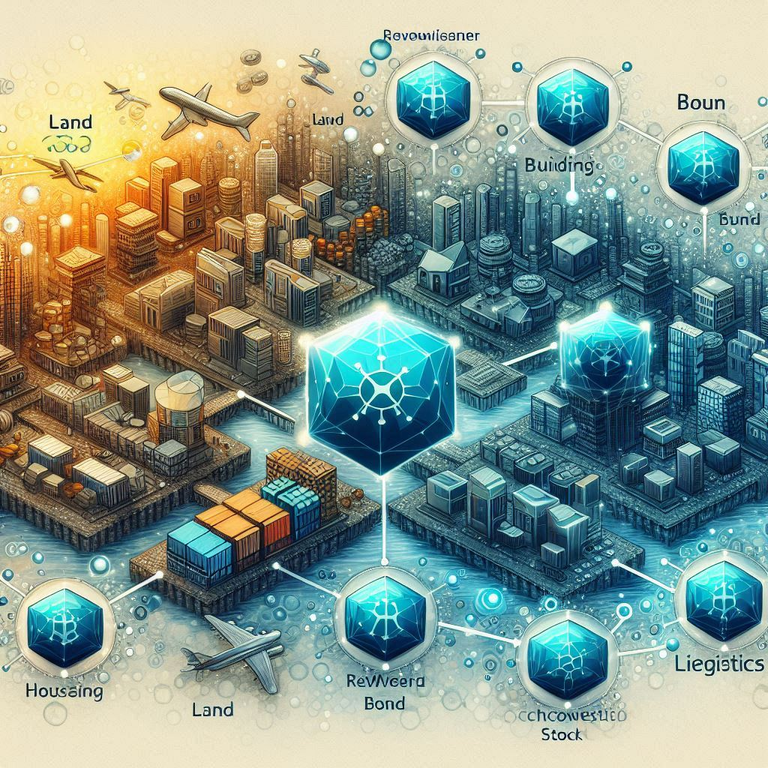The intersection of real-world assets (RWAs) and blockchain technology is poised to revolutionize the financial landscape.
By tokenizing physical and financial assets, we can unlock unprecedented levels of liquidity, accessibility, and efficiency. But what does the future hold for RWAs in the crypto space?
 RWAs
RWAs
Benefits of RWA Tokenization
Increased Liquidity
One of the most compelling advantages of RWA tokenization is the increase in liquidity. Traditionally illiquid assets, such as real estate or fine art, can be fractionalized and traded on secondary markets. This not only provides asset owners with more liquidity but also opens up investment opportunities to a broader audience.
Accessibility
Tokenization lowers the barriers to entry for many investors. By breaking down high-value assets into smaller, more affordable units, a wider range of people can participate in markets that were previously out of reach. This democratization of investment can lead to more inclusive financial systems.
Transparency and Efficiency
Blockchain technology offers an immutable and transparent record of ownership and transactions. Smart contracts can automate processes like asset transfer, dividend distribution, and compliance, reducing the need for intermediaries and increasing overall efficiency.
Financial Innovation
The composability of RWAs with other DeFi building blocks can lead to the creation of new financial instruments and opportunities. Imagine a world where you can use tokenized real estate as collateral for a decentralized loan or invest in a diversified portfolio of tokenized assets with just a few clicks.
Obstacles and Weaknesses
Regulatory Challenges
One of the most significant hurdles is the regulatory landscape. Different jurisdictions have varying rules and guidelines for tokenized assets, creating a complex environment for global adoption. Clear and consistent regulatory frameworks are essential for the sector's growth.
Technological Infrastructure
While blockchain technology has made significant strides, the infrastructure for tokenizing and trading RWAs needs to be robust and secure. Ensuring the reliability and scalability of these platforms is crucial for widespread adoption.
Market Education
Educating traditional investors and financial institutions about the benefits and risks of RWA tokenization is another challenge. Bridging the knowledge gap will require concerted efforts from industry stakeholders.
Standardization
Developing industry-wide standards for tokenization processes and protocols is essential for interoperability and trust. Without standardization, the market could become fragmented, hindering its growth.
Integration with Traditional Systems
Bridging the gap between tokenized assets and existing financial infrastructure is a complex task. Seamless integration is necessary to realize the full potential of RWAs.
The Next Five Years
Increased Adoption
As the benefits of RWA tokenization become more apparent, we can expect increased adoption by traditional financial institutions and corporations. This will likely lead to more innovative financial products and services.
Regulatory Clarity
Over the next five years, we can anticipate clearer regulatory frameworks for tokenized assets. This will provide greater certainty for market participants and pave the way for more widespread adoption.
New Asset Classes
The range of tokenized assets will continue to expand. Beyond real estate and art, we may see tokenization of intellectual property, carbon credits, and other exotic assets.
Integration of AI and ML
Artificial intelligence and machine learning technologies will enhance asset valuation and risk management processes, making the market more efficient and reliable.
Convergence of TradFi and DeFi
We can expect increased collaboration between traditional finance (TradFi) and decentralized finance (DeFi), leading to hybrid financial products that leverage the strengths of both systems.
Environmental Impact
The growth of tokenization in environmental assets and the rise of Regenerative Finance (ReFi) initiatives will contribute to more sustainable financial systems.
Innovative Financial Products
The next five years will likely see the creation of new on-chain financial instruments and DeFi protocols backed by tokenized real-world assets.
Real World Asset tokenization represents a significant bridge between the real world and the crypto/blockchain space.
While challenges remain, the potential benefits in terms of liquidity, accessibility, and financial innovation are substantial. As the sector matures over the next five years, we can expect increased adoption, regulatory clarity, and the emergence of new, innovative financial products and services built on tokenized real-world assets.